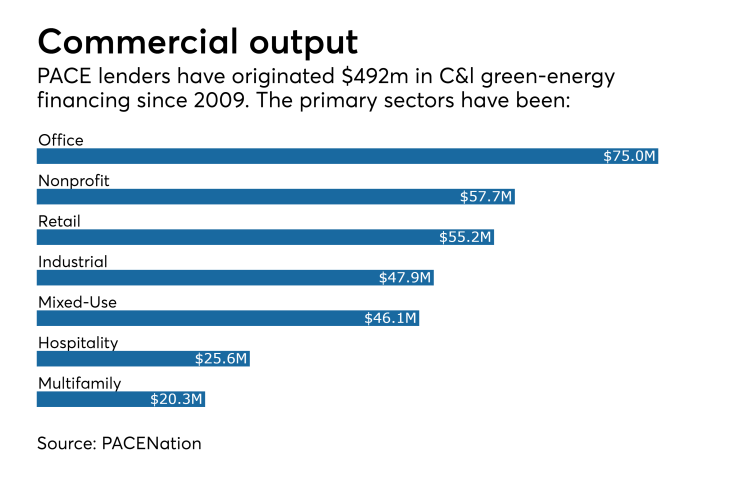Residential PACE securitization is expected to slow this year, but providers of property assessed clean energy financing for commercial properties could pick up some of the slack.
As with mortgages, commercial PACE assessments are much larger than residential assessments, and also require more intensive underwriting, since the sizes and uses of commercial property vary widely. So it’s taking commercial PACE providers longer to accumulate collateral for deals.
The first transaction, completed by Greenworks Lending in September, was just
Attractive funding wasn’t the only reason for coming to market sooner rather than later, however. Greenworks was also keen to find out whether rating agencies and re investors were comfortable with the way that the company is originating and underwriting.

“We are putting in place technological improvements … and we want to be sure we’re doing it right, that purchasers of our notes and rating agencies agree with our methods,” Bailey said during a panel at the Structured Finance Industry Group’s annual conference Monday.
“When you are operating as a first mover, it’s exciting, but it’s also a little terrifying,” she said.
Other commercial PACE providers may feel similarly. Several speakers on the panel said that one or two more securitizations could come to market shortly.
The lumpiness of lack of homogeneity of commercial PACE assessments isn’t the only reason its takes time to accumulate collateral for deals. Another issue is the larger number of states that have legislation enabling commercial PACE, as opposed to residential PACE. “We have an opportunity problem,” Bailey said. “It can be difficult to decide which states to go into. … Our company is active in 11 states, and we have a team of 20 people.”
To date, Greenworks has primarily provided financing to retrofit older buildings to make them more energy or water efficient. But in the last six months, it has seen a spike in interest from new development. The company is in the process of developing the appropriate underwriting, which Bailey described as “matching construction lending with PACE lending.” Because of the additional risk involved in developing and leasing new buildings, Greenworks needs to determine when to disburse funds.
Bailey expects this will type of financing to represent a significant part of is origination pipeline in the second half of the year.
Some buildings are just too much of a challenge to be worthwhile, however. “We almost routinely say ‘no’ to [properties with] mortgages that have already been securitized,” because it can be so difficult to find the mortgage servicer and obtain consent, she said. “It’s too much brain damage for a $600,000 or $700,000 deal if the servicer is based in Hong Kong.”
To date, only Morningstar is rating bonds backed by commercial PACE; it assigned an AA to Greenworks' deal. However, DBRS is working on its own ratings methodology for the asset class, according to senior vice president Lain Gutierrez.





